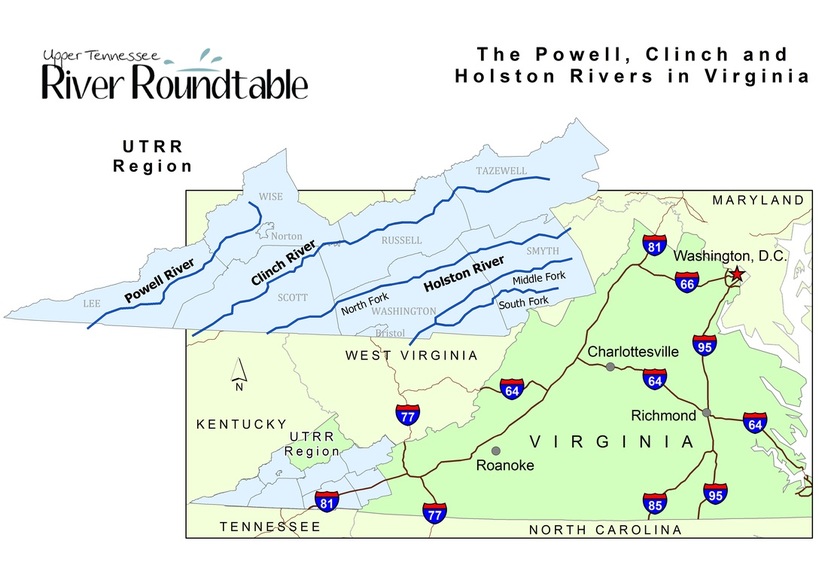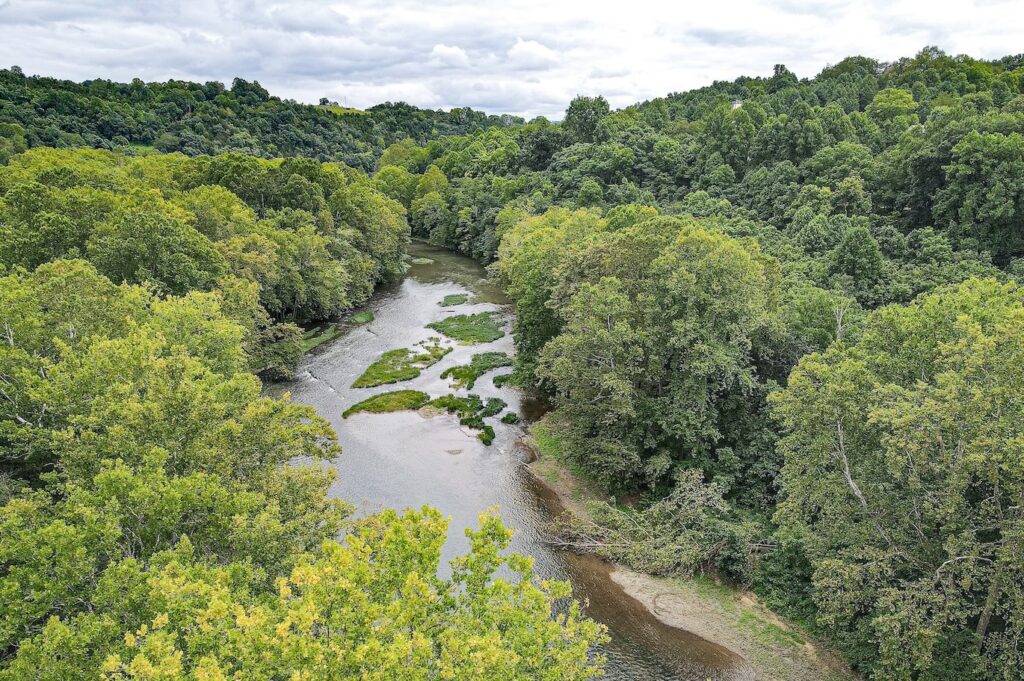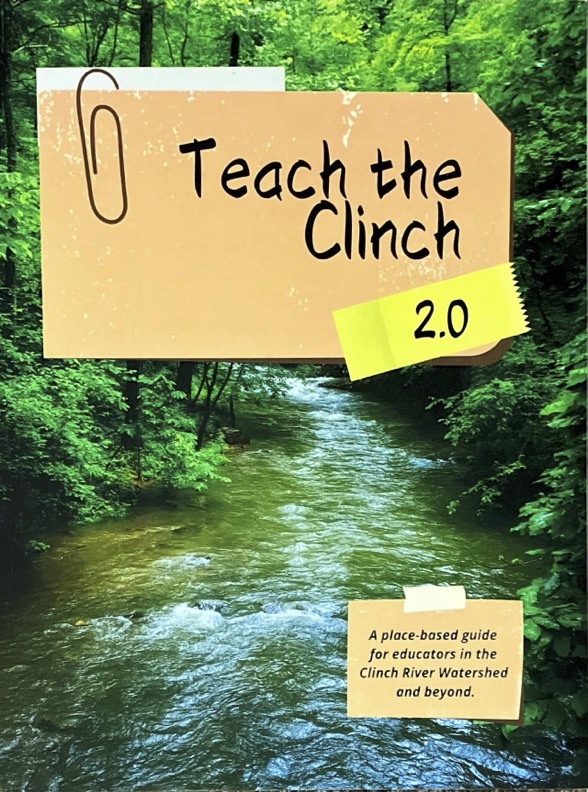By Kora Bednar, Intern at the Virginia Water Resources Research Center
Growing up in southwest Virginia, I was surrounded by mountains, creeks, forests, and rivers. But before college, I never viewed water as a resource. It was simply just…water. You drank it, swam in it, used it to wash your hands, and watered your plants with it. Water was just always there. I never had to ask why it was there, where it came from, or what happened to it after it went down the drain. Looking back, when you live in a community that has abundant water that you can clearly see from any road or mountainside, it makes you complacent and oblivious. Many of the people not only in older generations, but even younger generations think that as long as something is working everything is right with the world. This mindset, however, blinds people from seeing the issues that are happening slowly right in front of them. Yes, we live in an area where water seems to be abundant and never ending, but do people realize that not all of it is clean water? Yes, the creeks and streams look clear but there may be some hazardous substances in it that we cannot see with the naked eye.
To what end will we start realizing that just because we have something in abundance does not mean we will have it forever. At what point do we get a ‘wake up’ call to take care of not only our health but the number one resource on the planet, water? Just because water resources have been historically available, reliable, and clean in a region, does not mean that they will remain so. For the regions or even states that view water this way, what can be done differently in the future to help younger and future generations, to care more about the quality of water but also the life within it rather than being blinded by the abundance or quantity of what we seem to have. That is where education can step in, the bridge between the issue versus public understanding and participation.
Education toward water is important for many reasons including conservation, preventing pollution, environmental awareness, and health. Clean and safe drinking water is essential for public health and by fostering a sense of responsibility and stewardship, we can encourage individuals to make choices that support the health of our water systems, ensuring the sustainability and health of our water resources in the future. As a finite resource, it is important to educate individuals on how to conserve water in their daily lives. This includes teaching people about water-saving practices for home or business use. Raising awareness about the importance of keeping our water sources clean and free from pollution includes educating people on the proper disposal of household chemicals, pesticides, and other pollutants that can contaminate water sources.
Located in the Appalachian Mountains and bordered by the states of West Virginia, Kentucky, and Tennessee, Southwest Virginia is known for its rich cultural heritage, scenic beauty, and outdoor recreational opportunities. Southwest Virginia is home to one of the most biodiverse rivers in the United States however, many people living near that river don’t even realize what a rare natural resource they have in their backyard. Known as The Hidden River, the Clinch River is a vital natural resource that runs through several counties in Virginia and Tennessee; this paper specifically focuses on Tazwell, Russell, and Scott counties. There are a variety of reasons why watersheds are important for local communities to learn and know about. As home to a wide variety of plant and animal species, protecting this watershed helps to preserve the unique ecosystems and biodiversity found in the region. But who helps keep the Clinch clean and promotes its wellbeing to surrounding communities and future generations?

The Nature Conservancy (TNC) has been working with local communities, agencies, and others for more than three decades to protect and conserve rivers and ecosystems throughout the world. One of the many watersheds they targeted is the Clinch River as part of an ecosystem conservation program. The Clinch Valley program is a project run by the Virginia and Tennessee chapters that have field offices in Abingdon, Virginia and Hancock, Tennessee. The Nature Conservancy targets the Clinch River because it faces threats such as pollution, habitat destruction, and water scarcity. Since targeting the Clinch, TNC has implemented programs to restore and protect habitats, improve water quality, and promote sustainable water management practices in the Clinch watershed. The organization also works to engage and educate residents and communities about the importance of preserving water resources for future generations. Overall, the TNC’s involvement in water issues for the Clinch watershed has helped ensure that the Clinch River remains a healthy and vibrant ecosystem for years to come.

Another non-profit organization working alongside TNC is the Upper Tennessee River Roundtable. Representing an area of seven counties, the major rivers the organization focuses on are the Clinch, Holston, and Powell. The Roundtable aims to help improve the water quality of those three rivers. One reason the Roundtable focuses on the water quality within these rivers is due to the numerous and diverse fish, mussels, and other aquatic species living within these rivers. With 48 imperiled and vulnerable fish and mussel species, 21 of which are federally endangered or threatened species, the Roundtable has and continues to be active in improving the water in the Clinch to preserve the life of the threatened and endangered species.
One of the many ways the Roundtable help kids learn about environmental education is by creating outdoor education sites. The Roundtable has helped create outdoor classrooms in Smyth, Lee, and Wise counties, with its newest location at Richlands Elementary School located in Tazwell County. The Richlands outdoor classroom is next to a section of the Clinch River that the Roundtable had a hand in restoring. Besides the outdoor classroom site, the town of Richlands also created a walking trail where three education signs are posted for people to observe and learn about the Clinch River.

A curriculum guide for educators written by Carol Doss and Christopher Anama-Green called Teach the Clinch focuses on water lessons based on the Clinch River. The curricula can be used both in K-12 educators’ classrooms and at any event hosted near or along the Clinch River. The publisher of Teach the Clinch is the Clinch River Valley Initiative, a collaborative effort aimed at promoting conservation, economic development, and community engagement. The initiative’s goals include protecting and restoring the Clinch River and its surrounding lands, promoting sustainable agriculture and tourism, and supporting the region’s unique cultural heritage. Through a combination of education, advocacy, and on-the-ground projects, the Clinch River Valley Initiative aims to create a more vibrant and resilient future for the communities of the Clinch River Valley.
An agency active in keeping Southwest Virginia’s water clean, the Southwest Regional Office of the Department of Environmental Quality (DEQ) serves the counties of Bland, Buchanan, Carroll, Dickenson, Grayson, Lee, Russell, Scott, Smyth, Tazewell, Washington, Wise, Wythe, and the cities of Bristol, Galax and Norton. Although the DEQ office does not necessarily run education projects, they have and provide many resources that aid education programs within the various counties.

In the Southwest Regional DEQ Office participate in a yearly program sponsored by the Tazwell County Soil and Water Conservation District called Kids in the Creek. This event is one of the environmental education programs that aims to get elementary school kids outdoors and engaged with their local waterways, and some of the organizations mentioned in this paper help with this event. The program offers hands-on activities that teach kids about water quality, aquatic habitats, and the importance of protecting their local rivers and streams. Children participating in Kids in the Creek have an opportunity to explore creeks and rivers, conduct water quality testing, and learn about the plants and animals in the waterways. Kids cycle through stations for a couple hours while learning about water, soil, critters, and other parts of outdoor life. Educational yet fun activities can help instill a sense of stewardship and responsibility for the environment at a young age. As kids get older the program hopes to foster a love of nature and a greater appreciation for the beauty and importance of our water resources, starting at a local scale.
Another education involves Project WET, a nonprofit organization that provides water education resources and training for teachers, students, and community members. Founded in 1984, Project WET aims to raise awareness about the importance of water conservation, management, and stewardship through hands-on, interactive activities and curriculum materials. Offering a variety of educational materials, including activity guides, books, posters, and DVDs, Project WET cover topics such as water scarcity, pollution, the water cycle, and water quality. These resources are designed to engage students in learning about water issues and inspire them to become responsible stewards of this vital natural resource. In addition to providing educational materials, Project WET also offers professional development workshops and training programs for teachers, educators, and water resource professionals. These workshops help participants integrate water education into their curriculum and encourage them to take action to protect water resources in their communities. Project WET helps provide lessons used at camps hosted by the Southwest Virginia 4-H Educational Center, giving elementary school kids a fun and interactive experience with water outside of the classroom setting.
To conclude, preparing future generations requires going out into communities with opportunities for people learn and be include in what is being done to restore their waterways. As a resource that is essential for life, water is a topic that everyone should and continue to learn no matter what age. Whether through local organizations or even schools, taking actions to create, use, and apply education within an area such as the Clinch Valley watershed allows kids and communities a chance to learn how to get involved in the care and conservation of their local water resources.
Special Thanks
I would like to highlight everyone who contributed toward this project. It was a privilege to meet and talk with everyone personally, not only for their help toward my project but also a great experience to meet them. I am grateful to have met more of the people and organizations within my hometown. A big thank you to the following contributors who took the time to meet:
Southwest Regional DEQ Office Contributors: Martha Chapman, Jeffrey Hurst, Willard Keene, Kelly Miller, Ethan Virts
Southwest Virginia 4H Educational Center Contributor: Abbigail Moore
The Nature Conservancy Contributor: Nick Proctor
Virginia Association for Environmental Education (VAEE) Contributor: Tara Poelzing
Virginia Water Resource Research Center Contributor: Elizabeth Sharp
Upper Tennessee River Roundtable Contributor: Carol Doss
